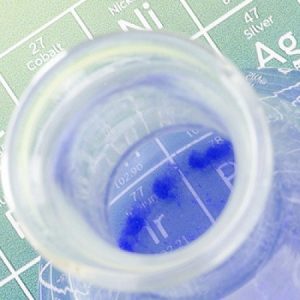
Determining chemical compatibility can be a challenge, with the array of chemical classes and formulations that typically exist in the workplace. Understanding and accurately predicting compatibility is critical for employee safety, environmental protection, and regulatory compliance.
Compatibility is a top concern during all phases of hazardous material management, including storage, mixing, use, transport, spill response, and disposal.
While a trained chemist in a laboratory will plan an experiment before he or she mixes chemical A with chemical B in a round-bottom flask, for example, but many hazardous materials managers and waste technicians often must make an educated guess on potential reactions from mixing chemical formulations.
Even when away from work, homeowners routinely encounter compatibility issues. For example, the simple task of unclogging a kitchen sink can be unknowingly dangerous when mixing different chemicals. Homeowners who are unsuccessful with a first drain cleaner buy a different brand, which they pour down the drain right on top of the old one. If they happen to be looking down the drain to see if anything is happening, potentially blinding consequences can result.
Mixing chemicals is the most obvious compatibility risk, but storing hazardous materials or wastes can pose risks as well. Everyone knows the rule about storing acids separate from bases (which is absolutely correct), but when is the last time your storage areas have been evaluated in terms of chemical compatibility? Containers can corrode or become damaged, and leaked contents can become mixed with incompatible containers, so where chemicals are moved, added, or removed, the dynamics of compatibility also change.
To make matters worse, it can be difficult to get help on compatibility when we actually need it.
Although there’s lots of helpful (and seemingly boring) information in those safety datasheets, manufacturers cannot possibly provide a complete list of all the chemicals which are incompatible with their product. Certainly, they should give warnings if their product is incompatible with common substances, such as water or air, and they may also caution against mixing with certain classes of chemicals. But, when it comes to specifics, safety datasheets usually fall far short of what we need to assess chemical incompatibility in the real world.
The American Institute of Chemical Engineers (AIChE) website provides free, reliable, and easy-to-use assistance. The AIChE’s Chemical Reactivity Worksheet (CRW) is a great resource to help predict the possible danger of mixing thousands of common hazardous chemicals, and also includes case histories on specific chemical incidents.
Here are two tools you can access with the Chemical Reactivity Worksheet:
The Mixture Manager screen allows you to search for chemicals in the CRW’s database, see a preview of the information on the chemical datasheets, and create a virtual mixture of chemicals. You can also access all of the other features of the program from this screen, including the Compatibility Chart and hazards report for any mixture you create, reference information about the reactive groups used in the CRW, and information about absorbent incompatibilities with certain chemicals.
The Compatibility Chart shows the predicted hazards of mixing the chemicals in a mixture in an easy-to-use graphical interface. The reactivity predictions are color coded, and the cells on the chart can be clicked to find more information about specific predicted reactions. General hazard statements, predicted gas products, and literature documentation for the selected pair of chemicals are shown at the bottom of the chart.
Looking for more practical environmental chemistry training that’s focused on helping EHS professionals succeed? Our three-day Applied Chemistry for EHS Professionals™ course arms you with a solid working knowledge of environmental chemistry to be better prepared to predict and understand chemical compatibility, fate and transport of chemicals in environmental media, sampling and monitoring strategies, laboratory analytical data, and more! Click here to LEARN MORE & REGISTER.

